Robert M Bonner
Deceased
from Greensboro, NC
- Also known as:
-
- Robert Macarthur Bonner
- Robert B Bonner
- Robert Bonner Macarthur
- Robert M Booner
- Phone and address:
- 3317 Regents Park Ln, Greensboro, NC 27455
Robert Bonner Phones & Addresses
- 3317 Regents Park Ln, Greensboro, NC 27455
- 3019 Cottage Pl, Greensboro, NC 27455
- Blacksburg, VA
- Alexandria, VA
Us Patents
-
Precision Laser Capture Microdissection Utilizing Short Pulse Length
view source -
US Patent:6420132, Jul 16, 2002
-
Filed:Jan 31, 2000
-
Appl. No.:09/495401
-
Inventors:Robert F. Bonner - Washington DC
Seth R. Goldstein - Bethesda MD
Paul D. Smith - Annapolis MD
Thomas J. Pohida - Monrovia MD -
Assignee:The United States of America as represented by the Department of Health and Human Services - Washington DC
-
International Classification:G01N 130
-
US Classification:435 405, 435 4052
-
Abstract:Laser capture microdissection occurs where the transfer polymer film is placed on a substrate overlying visualized and selected cellular material from a sample for extraction. The transfer polymer film is focally activated (melted) with a pulse brief enough to allow the melted volume to be confined to that polymer directly irradiated. This invention uses brief pulses to reduce the thermal diffusion into surrounding non-irradiated polymer, preventing it from being heated hot enough to melt while providing sufficient heat by direct absorption in the small focal volume directly irradiated by the focused laser beam. This method can be used both in previously disclosed contact LCM, non contact LCM, using either condenser-side (or beam passes through polymer before tissue) or epi-irradiation (or laser passes through tissue before polymer). It can be used in configuration in which laser passes through tissue before polymer with and without an additional rigid substrate. In its preferred configuration it uses the inertial confinement of the surrounding unmelted thermoplastic polymer (and the overlying rigid substrate) to force expansion of the melted polymer into the underlying tissue target.
-
Isolation Of Cellular Material Under Microscopic Visualization
view source -
US Patent:6569639, May 27, 2003
-
Filed:Jan 18, 2001
-
Appl. No.:09/765937
-
Inventors:Lance A. Liotta - Potomac MD
Michael E. Buck - Bethesda MD
Rhonda Ann Weiss - Washington DC
Zhengping Zhuang - Bethesda MD
Robert F. Bonner - Washington DC -
Assignee:The United States of America as represented by the Department of Health and Human Services - Washington DC
-
International Classification:G01N 130
-
US Classification:435 405, 100 4, 422 681
-
Abstract:A method of microdissection which involves: forming an image field of cells of the tissue sample utilizing a microscope, identifying at least one zone of cells of interest from the image field of cells which at least one zone of cells of interest includes different types of cells than adjacent zones of cells, and extracting the at least one zone of cells of interest from the tissue sample. The extraction is achieved by contacting the tissue sample with a transfer surface that can be selectively activated so that regions thereof adhere to the zone of cells of interest to be extracted. The transfer surface includes an activatable adhesive layer which provides chemical or electrostatic adherence to the selected regions of the tissue sample. After the transfer surface is activated the transfer surface and tissue sample are separated. During separation the zone of cells of interest remains adhered to the transfer surface and is thus separated from the tissue sample.
-
Mechanical Handling Systems For Laser Capture Microdissection
view source -
US Patent:6720191, Apr 13, 2004
-
Filed:Oct 30, 2000
-
Appl. No.:09/601559
-
Inventors:Seth R. Goldstein - Bethesda MD
Robert F. Bonner - Washington DC
Paul D. Smith - Annapolis MD
John Peterson - Falls Church VA
Thomas Pohida - Monrovia MD -
Assignee:The United States of America as represented by the Department of Health and Human Services - Washington DC
-
International Classification:G01N 100
-
US Classification:436174, 436 43, 436 63, 435325, 422 50, 422 63, 422 64, 422 65, 422 66, 422 681
-
Abstract:A method and apparatus of gathering by LCM identified cellular material from randorn locations on a tissue sample to designated locations on a transporting substrate enables convenient further processing. A transporting substrate has an identified mapped location for receiving identified cellular material. At least a segment of a selectively activatable coating is placed on the side of the transporting substrate in apposition to the tissue sample at the mapped location. The transporting substrate and sample are relatively moved to place the selectively activated coating at the mapped location in apposition to identified cellular material of the tissue sample which is to be extracted. Thereafter, the selectively activatable coating is activated and impressed or impressed and activated to form an adhesive region on the transporting substrate for adhering to the identified cellular material. Upon removal of the transporting substrate from the tissue sample, identified cellular material adheres to the transporting substrate at the mapped location.
-
Non-Contact Laser Capture Microdissection
view source -
US Patent:6743601, Jun 1, 2004
-
Filed:Dec 6, 1999
-
Appl. No.:09/456042
-
Inventors:Robert F. Bonner - Washington DC
Seth R Goldstein - Bethesda MD
Paul D. Smith - Annapolis MD
Thomas Pohida - Monrovia MD -
Assignee:The United States of America as represented by the Department of Health and Human Services - Washington DC
-
International Classification:G01N 130
-
US Classification:435 405, 435 6, 435 721, 435 723, 435 4052, 436177, 382133, 428346, 428352
-
Abstract:An apparatus and process for the micro juxtaposition is set forth where a selectively activatable surface is maintained spaced apart from the tissue sample and juxtaposed to the tissue sample by activation. In the typical case, activation occurs by laser radiation with the material of the activatable surface thermally expanding and bringing about the desired micro juxtaposition. The disclosed micro juxtapositioning can cause locally and microscopically pressure on tissue sample, insertion to the tissue sample, or contact of an activated or prepared surface to the tissue sample.
-
Convex Geometry Adhesive Film System For Laser Capture Microdissection
view source -
US Patent:6783734, Aug 31, 2004
-
Filed:Sep 1, 1999
-
Appl. No.:09/387810
-
Inventors:Seth R. Goldstein - Bethesda MD
Robert F. Bonner - Bethesda MD
Paul D. Smith - Bethesda MD
John Peterson - Bethesda MD
Thomas Pohida - Bethesda MD -
Assignee:The United States of America as represented by the Department of Health and Human Services - Washington DC
-
International Classification:B01L 1100
-
US Classification:422101, 422 681, 422 99, 4352841, 4353071, 4353091, 436 63, 436174, 436175, 436177
-
Abstract:A tissue sample is conventionally visualized in a microscope. A selectively activated convex surface is provided, preferably at the distal end of a rod. This selectively activated convex surface when activated, typically with a laser through an optic light path in the microscope, provides the activated region with adhesive properties. At least one portion of the tissue sample which is to be extracted is identified. This identified portion is contacted with a portion of the selectively activated convex surface on the end of the rod. When the convex surface is activated, typically by exposure to laser light in the footprint of the desired sample, an adhesive transfer surface on the selectively activated convex surface is provided which adheres to the desired cells in the footprint of the desired sample. Thereafter, the adhesive transfer surface is separated from the remainder of the tissue sample while maintaining adhesion with the desired cells. Thus the desired portion of the tissue sample is extracted.
-
Isolation Of Cellular Material Under Microscopic Visualization
view source -
US Patent:6867038, Mar 15, 2005
-
Filed:Feb 9, 2001
-
Appl. No.:09/780234
-
Inventors:Lance A. Liotta - Potomac MD, US
Michael Emmert-Buck - Silver Spring MD, US
David B. Krizman - Gaithersburg MD, US
Rodrigo Chuaqui - Las Condes, CL
W. Marston Linehan - North Bethesda MD, US
Jeffry M. Trent - Rockville MD, US
Robert F. Bonner - Washington DC, US
Seth R. Goldstein - Bethesda MD, US
Paul D. Smith - Annapolis MD, US
John I. Peterson - Falls Church VA, US -
Assignee:The United States of America as represented by the Department of Health and Human Services - Washington DC
-
International Classification:C12N005/00
-
US Classification:435325, 435 29, 435 30, 435363, 435 11, 436 8
-
Abstract:A method of microdissection which involves forming an image field of cells of the tissue sample utilizing a microscope, identifying at least one zone of cells of interest from the image field of cells which at least one zone of cells of interest includes different types of cells than adjacent zones of cells, and extracting the at least one zone of cells of interest from the tissue sample. The extraction is achieved by contacting the tissue sample with a transfer surface that can be selectively activated so that regions thereof adhere to the zone of cells of interest to be extracted. The transfer surface includes a selectively activatable adhesive layer which provides, for example, chemical or electrostatic adherence to the selected regions of the tissue sample. After the transfer surface is activated, the transfer surface and tissue sample are separated. During separation, the zone of cells of interest remains adhered to the transfer surface and is thus separated from the tissue sample, the zone of cells of interest may then be molecularly analyzed.
-
Method Of Laser Capture Microdissection From A Sample Utilizing Short Pulse Length
view source -
US Patent:6897038, May 24, 2005
-
Filed:Apr 8, 2002
-
Appl. No.:10/118487
-
Inventors:Robert F. Bonner - Washington DC, US
Seth R. Goldstein - Bethesda MD, US
Paul D. Smith - Annapolis MD, US
Thomas J. Pohida - Monrovia MD, US -
Assignee:The United States of America as represented by the Secretary of the Department of Health and Human Services - Washington DC
-
International Classification:G01N001/30
-
US Classification:435 405, 435 4052
-
Abstract:Laser capture microdissection occurs where the transfer polymer film is placed on a substrate overlying visualized and selected cellular material from a sample for extraction. The transfer polymer film is focally activated (melted) with a pulse brief enough to allow the melted volume to be confined to that polymer directly irradiated. This invention uses brief pulses to reduce the thermal diffusion into surrounding non-irradiated polymer, preventing it from being heated hot enough to melt while providing sufficient heat by direct absorption in the small focal volume directly irradiated by the focused laser beam. This method can be used both in previously disclosed contact LCM, non contact LCM, using either condenser-side (or beam passes through polymer before tissue) or epi-irradiation (or laser passes through tissue before polymer). It can be used in configuration in which laser passes through tissue before polymer with and without an additional rigid substrate. In its preferred configuration it uses the inertial confinement of the surrounding unmelted thermoplastic polymer (and the overlying rigid substrate) to force expansion of the melted polymer into the underlying tissue target.
-
Target Activated Microtransfer
view source -
US Patent:7695752, Apr 13, 2010
-
Filed:Aug 12, 2005
-
Appl. No.:11/202848
-
Inventors:Robert F. Bonner - Washington DC, US
Thomas J. Pohida - Monrovia MD, US
Michael R. Emmert-Buck - Easton MD, US
Michael Anthony Tangrea - Odenton MD, US
Rodrigo F. Chuaqui - North Potomac MD, US -
Assignee:The Government of the United States of America as represented by the Secretary of the Department of Health and Human Services - Washington DC
-
International Classification:B05D 1/00
-
US Classification:427 213, 427 211, 427464, 4352831, 4352873, 356 36, 356 38, 356428, 428346
-
Abstract:A device for performing target activated transfer that includes a mounting surface for mounting a tissue sample; and a light source positioned to substantially uniformly irradiate both stained and unstained regions of the tissue sample with light energy that activates the reagent to selectively adhere the stained regions to a transfer surface. Also described is an automated system for transferring tissue from a tissue sample to a transfer substrate. The system includes means for holding a tissue section that includes targets specifically stained with an absorptive stain thereby resulting in a stained tissue surface, and a flexible transfer film that includes a lower thermoplastic layer in sufficient thermal contact with the stained tissue surface; an irradiating assembly configured to provide a predetermined uniform light dose to the entire tissue section; and means for applying a constant pressure to the transfer film during irradiation.
Medicine Doctors

Robert A. Bonner
view sourceSpecialties:
Endocrinology, Diabetes & Metabolism, Internal Medicine
Work:
Robert A Bonner MD
3975 Jackson St STE 107, Riverside, CA 92503
9513530333 (phone), 9513530366 (fax)
3975 Jackson St STE 107, Riverside, CA 92503
9513530333 (phone), 9513530366 (fax)
Education:
Medical School
University of Minnesota Medical School at Minneapolis
Graduated: 1973
University of Minnesota Medical School at Minneapolis
Graduated: 1973
Procedures:
Thyroid Biopsy
Conditions:
Thyroiditis
Diabetes Mellitus (DM)
Diabetic Peripheral Neuropathy
Disorders of Lipoid Metabolism
Hyperthyroidism
Diabetes Mellitus (DM)
Diabetic Peripheral Neuropathy
Disorders of Lipoid Metabolism
Hyperthyroidism
Languages:
English
Spanish
Spanish
Description:
Dr. Bonner graduated from the University of Minnesota Medical School at Minneapolis in 1973. He works in Riverside, CA and specializes in Endocrinology, Diabetes & Metabolism and Internal Medicine. Dr. Bonner is affiliated with Parkview Community Hospital Medical Center.

Robert Louis Bonner
view sourceSpecialties:
Pediatrics
Education:
University of Illinois at Chicago (1989)
Wikipedia References

Robert C. Bonner
Resumes

Robert Bonner Hackettstown, NJ
view sourceWork:
CFY
New York, NY
Apr 2012 to Jan 2013
Managing Director NORTH STAR ACADEMY CHARTER HIGH SCHOOL
Newark, NJ
May 2009 to Mar 2012
Director of Operations middle and high schools
Jan 2009 to Apr 2009
Network-Wide Director of Special Projects THE CENTER FOR HEALTHY SCHOOLS
Piscataway, NJ
May 2004 to Dec 2008
Program Manager University of Medicine & Dentistry of New Jersey
Piscataway, NJ
Sep 2002 to May 2004
Research & Project Development Analyst HIGHLAND PARK HIGH SCHOOL
Highland Park, NJ
Sep 2002 to Jun 2003
School Clinician QUESTIA MEDIA AMERICA, INC
Houston, TX
Apr 2001 to Apr 2002
Manager, Business Development MINTZ, LEVIN, COHEN, FERRIS, GLOVSKY & POPEO, P.C
Washington, DC
Jun 1998 to Mar 2001
Associate ABBOTT ELEMENTARY SCHOOL
Los Angeles, CA
Jul 1990 to Jun 1993
Sixth Grade Teacher
New York, NY
Apr 2012 to Jan 2013
Managing Director NORTH STAR ACADEMY CHARTER HIGH SCHOOL
Newark, NJ
May 2009 to Mar 2012
Director of Operations middle and high schools
Jan 2009 to Apr 2009
Network-Wide Director of Special Projects THE CENTER FOR HEALTHY SCHOOLS
Piscataway, NJ
May 2004 to Dec 2008
Program Manager University of Medicine & Dentistry of New Jersey
Piscataway, NJ
Sep 2002 to May 2004
Research & Project Development Analyst HIGHLAND PARK HIGH SCHOOL
Highland Park, NJ
Sep 2002 to Jun 2003
School Clinician QUESTIA MEDIA AMERICA, INC
Houston, TX
Apr 2001 to Apr 2002
Manager, Business Development MINTZ, LEVIN, COHEN, FERRIS, GLOVSKY & POPEO, P.C
Washington, DC
Jun 1998 to Mar 2001
Associate ABBOTT ELEMENTARY SCHOOL
Los Angeles, CA
Jul 1990 to Jun 1993
Sixth Grade Teacher
Education:
Graduate School of Applied & Professional Psychology
Jan 2005
Masters RUTGERS UNIVERSITY
Piscataway, NJ
2002 to 2005 HARVARD UNIVERSITY
Cambridge, MA
1995 to 1998
Juris Doctor UNIVERSITY OF CALIFORNIA
Berkeley, CA
1992 to 1994 HAVERFORD COLLEGE
Haverford, PA
1986 to 1990
Bachelor of Arts in Sociology/Anthropology Bolt Law School
MA
Jan 2005
Masters RUTGERS UNIVERSITY
Piscataway, NJ
2002 to 2005 HARVARD UNIVERSITY
Cambridge, MA
1995 to 1998
Juris Doctor UNIVERSITY OF CALIFORNIA
Berkeley, CA
1992 to 1994 HAVERFORD COLLEGE
Haverford, PA
1986 to 1990
Bachelor of Arts in Sociology/Anthropology Bolt Law School
MA

Robert Bonner Hackettstown, NJ
view sourceWork:
CFY
Apr 2012 to 2000
Managing Director NORTH STAR ACADEMY CHARTER SCHOOL
Newark, NJ
May 2009 to Mar 2012
Director of Operations NORTH STAR ACADEMY CHARTER SCHOOL NETWORK
Newark, NJ
Jan 2009 to Apr 2009
Network Director of Special Projects THE CENTER FOR HEALTHY SCHOOLS
Piscataway, NJ
May 2004 to Dec 2008
Program Manager THE CENTER FOR HEALTHY SCHOOLS
Piscataway, NJ
Sep 2002 to May 2004
Research & Project Development Analyst HIGHLAND PARK HIGH SCHOOL
Highland Park, NJ
Sep 2002 to Jun 2003
School Clinician QUESTIA MEDIA AMERICA, INC
Houston, TX
Apr 2001 to Apr 2002
Manager, Business Development MINTZ, LEVIN, COHEN, FERRIS, GLOVSKY & POPEO, P.C
Washington, DC
Jun 1998 to Mar 2001
Associate ABBOTT ELEMENTARY SCHOOL
Los Angeles, CA
Jul 1990 to Jun 1993
Sixth Grade Teacher
Apr 2012 to 2000
Managing Director NORTH STAR ACADEMY CHARTER SCHOOL
Newark, NJ
May 2009 to Mar 2012
Director of Operations NORTH STAR ACADEMY CHARTER SCHOOL NETWORK
Newark, NJ
Jan 2009 to Apr 2009
Network Director of Special Projects THE CENTER FOR HEALTHY SCHOOLS
Piscataway, NJ
May 2004 to Dec 2008
Program Manager THE CENTER FOR HEALTHY SCHOOLS
Piscataway, NJ
Sep 2002 to May 2004
Research & Project Development Analyst HIGHLAND PARK HIGH SCHOOL
Highland Park, NJ
Sep 2002 to Jun 2003
School Clinician QUESTIA MEDIA AMERICA, INC
Houston, TX
Apr 2001 to Apr 2002
Manager, Business Development MINTZ, LEVIN, COHEN, FERRIS, GLOVSKY & POPEO, P.C
Washington, DC
Jun 1998 to Mar 2001
Associate ABBOTT ELEMENTARY SCHOOL
Los Angeles, CA
Jul 1990 to Jun 1993
Sixth Grade Teacher
Education:
Graduate School of Applied & Professional Psychology
Jan 2005
Clinical RUTGERS UNIVERSITY
Piscataway, NJ
2002 to 2005 HARVARD UNIVERSITY
Cambridge, MA
1995 to 1998
Juris Doctor UNIVERSITY OF CALIFORNIA
Berkeley, CA
1992 to 1994 HAVERFORD COLLEGE
Haverford, PA
1986 to 1990
Bachelor of Arts in Sociology/Anthropology Bolt Law School
MA
Jan 2005
Clinical RUTGERS UNIVERSITY
Piscataway, NJ
2002 to 2005 HARVARD UNIVERSITY
Cambridge, MA
1995 to 1998
Juris Doctor UNIVERSITY OF CALIFORNIA
Berkeley, CA
1992 to 1994 HAVERFORD COLLEGE
Haverford, PA
1986 to 1990
Bachelor of Arts in Sociology/Anthropology Bolt Law School
MA
Isbn (Books And Publications)

Lawyers and Litigants in Ancient Athens: The Genesis of the Legal Profession
view sourceAuthor
Robert Johnson Bonner
ISBN #
0389012521

Evidence in Athenian Courts and Public Arbitration in Athenian Law
view sourceAuthor
Robert Johnson Bonner
ISBN #
0405115865

William F. Cody's Wyoming Empire: The Buffalo Bill Nobody Knows
view sourceAuthor
Robert Bonner
ISBN #
0806138297

Colors And Blood: Flag Passions Of The Confederate South
view sourceAuthor
Robert E. Bonner
ISBN #
0691091587

The Soldier's Pen: Firsthand Impressions of the Civil War
view sourceAuthor
Robert E. Bonner
ISBN #
0809087448
Name / Title
Company / Classification
Phones & Addresses
Manager
AppraisalPro LLC
745 STE P CINEMA CT, Kernersville, NC 27284
organizer
Premium Services Inc, LLC
NOT PROVIDED
NOT PROVIDED
Executive Vice-President
Isomet Corporation
Mfg Analytical Instr Mfg Optical Instr/Lens Mfg Elec Measuring Instr Mfg Process Cntrl Instr Mfg Elec Mach/Equip/Supp · Electrician · Lasers-Equipment & Service (Wh · Electric Equip & Wiring Merchant Whols
Mfg Analytical Instr Mfg Optical Instr/Lens Mfg Elec Measuring Instr Mfg Process Cntrl Instr Mfg Elec Mach/Equip/Supp · Electrician · Lasers-Equipment & Service (Wh · Electric Equip & Wiring Merchant Whols
5263 Prt Royal Rd, Springfield, VA 22151
7033218301, 7033218546, 3179213364
7033218301, 7033218546, 3179213364
BONNER MANAGEMENT GROUP, LLC
VALLEY INVENTIONS, L.P
Partner
Golf Doctors, LLC
Mfg Sporting/Athletic Goods
Mfg Sporting/Athletic Goods
3115 Cob Hl Ln, Oakton, VA 22124
3115 Cobb Hl Ln, Vienna, VA 22124
3115 Cobb Hl Ln, Vienna, VA 22124
Principal
Mindstorm Media LLC
Communication Services
Communication Services
745 Cinema Ct, Kernersville, NC 27284
Incorporator
ALEXANDER COAL AND LUMBER COMPANY, INC
Lawyers & Attorneys

Robert Bonner - Lawyer
view sourceISLN:
1000319824
Admitted:
2016
University:
University of Florida, Fredric G. Levin College of Law

Robert Bonner - Lawyer
view sourceSpecialties:
Commercial Corporate Law
ISLN:
908921575
Admitted:
1948
University:
University of British Columbia, B.A., 1942
Law School:
University of British Columbia, LL.B., 1948

Robert Bonner - Lawyer
view sourceOffice:
Gibson, Dunn & Crutcher LLP
Specialties:
Litigation
Antitrust and Trade Regulation
Appellate and Constitutional Law
Crisis Management
General Practice
Arbitration
Mediation
Government and Commercial Contracts
Intellectual Property
Media, Entertainment and Technology
Public Policy
White Collar Defense and Investigations
Antitrust and Trade Regulation
Appellate and Constitutional Law
Crisis Management
General Practice
Arbitration
Mediation
Government and Commercial Contracts
Intellectual Property
Media, Entertainment and Technology
Public Policy
White Collar Defense and Investigations
ISLN:
908921605
Admitted:
1966
University:
Georgetown University, 1966; University of Maryland, 1963
Law School:
Georgetown University Law Center, JD - Juris Doctor
License Records
Robert E Bonner
License #:
MT002769T - Expired
Category:
Medicine
Type:
Graduate Medical Trainee
Robert Louis Bonner Jr
License #:
MT023413T - Expired
Category:
Medicine
Type:
Graduate Medical Trainee
Youtube
Plaxo

Robert Bonner
view sourceCape May CountySchool Teacher at Lower Cape May Regional

Robert Bonner
view sourceRenton, WAowner/ designer at www.rgbjr.com

Bonner, Robert
view sourceSouthport, CTEVP, Co-Founder at First Beacon Financial, LLC Past: AVP at Velocity Commercial Capital (VCC), Research Director at WBDC TV/Tribune...

Robert Bonner
view sourceVillanova, PA
Myspace
News

Bobcat Fire: First Structure Claimed By The Flames; New Evacuation Orders
view source- At todays meeting of the L.A. County Sheriff Civilian Oversight Commission, commissioner Robert Bonner called on Sheriff Alex Villanueva to resign. Noting that he made the call with great reluctance, Bonner nevertheless went on to lay out the reasons for his request.
- Date: Sep 18, 2020
- Category: Headlines
- Source: Google

Former DEA leaders bash Colorado pot law
view source- amicus brief urging the Supreme Court to consider the case and end marijuana's legalized status in Colorado. The state's law "not only is causing great harm to neighboring states, but is in direct conflict with federal law," said Robert Bonner, DEA administrator under the administrations of George H.
- Date: Feb 20, 2015
- Category: U.S.
- Source: Google

Ex-DEA heads press White House to quickly seek stop to legal recreational ...
view source- The former DEA administrators are Bensinger, John Bartels, Robert Bonner, Thomas Constantine, Asa Hutchinson, John Lawn, Donnie Marshall and Francis Mullen. They served for both Republican and Democratic administrations.
- Date: Mar 05, 2013
- Category: U.S.
- Source: Google

Mexican presidential election: Drug war-weary voters set to return opposition ...
view source- Robert Bonner, a former head of the US Drugs Enforcement Administration (DEA), told The Sunday Telegraph: "There is a profound issue that whoever is next president of Mexico will need to face. And that is whether they continue Calderon's policy, which is to defeat the cartels and elimina
- Date: Jun 24, 2012
- Category: World
- Source: Google

Robert Bonner Jr.
view source
Robert Leo Bonner Sr.
view source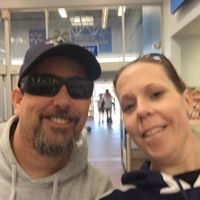
Robert Bonner
view source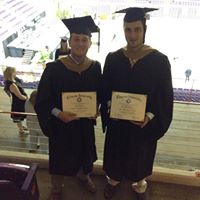
Robert Bonner
view source
Robert Bonner
view source
Robert Bonner
view source
Robert Bonner
view source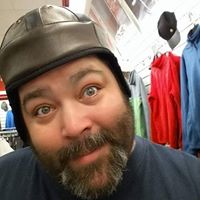
Robert Bonner
view sourceClassmates

Robert Bonner
view sourceSchools:
Greenhills School Ann Arbor MI 1986-1990
Community:
Ralph Jones, Sheryl Covington, Heather Wright

Robert Bonner
view sourceSchools:
West Point High School West Point GA 1970-1974
Community:
Wheeler Shaver, Michael Bartlett

Robert Bonner
view sourceSchools:
Jefferson High School Edgewater CO 2001-2005
Community:
Keith Kennedy, Brenda Freeman, Amy Beebe

Robert Bonner
view sourceSchools:
Brown High School Atlanta GA 1955-1959
Community:
Jane Bazemore, Kenny Golightly, Melvin Freeman

Robert Bonner
view sourceSchools:
Wicksburg High School Newton AL 1984-1988
Community:
Jean Skipper, Brenda Wornock, Keith Croft

Robert Bonner
view sourceSchools:
Pittsford High School Pittsford MI 1985-1989
Community:
Kathleen Bayless, Brenda Bowen, Todd Deller

Robert Bonner
view sourceSchools:
Easterly Parkway Elementary School State College PA 1972-1974, Park Forest Elementary School State College PA 1973-1974, Mary E. Nicholson Elementary School 70 Indianapolis IN 1974-1979, Merle Sidener Middle School 559 Indianapolis IN 1979-1981
Community:
Joan Westhoff, Yvonne Salazar, Thomas Jacobson, Betsy Smith

Robert Bonner
view sourceSchools:
Palmer High School Palmer TX 1979-1983
Community:
Danny Phelps, Margaret Toombs, Jana Claxton, Michael Verver
Googleplus

Robert Bonner
Lived:
San Antonio, Texas
Clinton, Maryland
Vilseck, Germany
Schweinfurt, Germany
Killeen, Tx
Salisbury, Md
Clinton, Maryland
Vilseck, Germany
Schweinfurt, Germany
Killeen, Tx
Salisbury, Md
Work:
Moussa Temple #106 - Noble (2011)
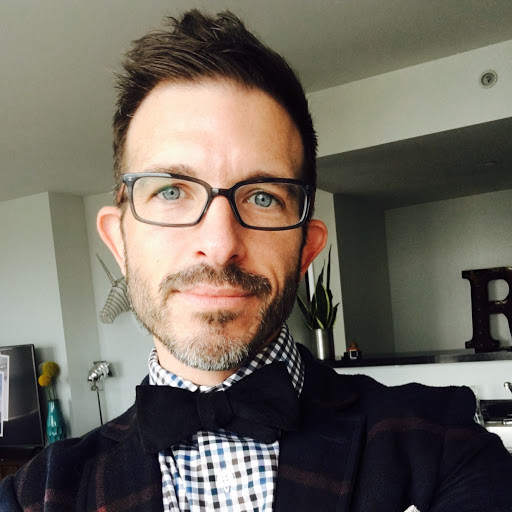
Robert Bonner

Robert Bonner

Robert Bonner

Robert Bonner
Tagline:
Biophysicist specializing in medical optics. UU Pacifist. Bell Tower gnome.

Robert Bonner

Robert Bonner
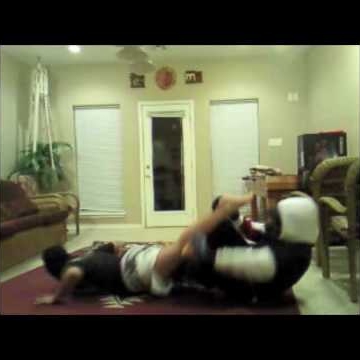
Robert Bonner
Get Report for Robert M Bonner from Greensboro, NCDeceased












